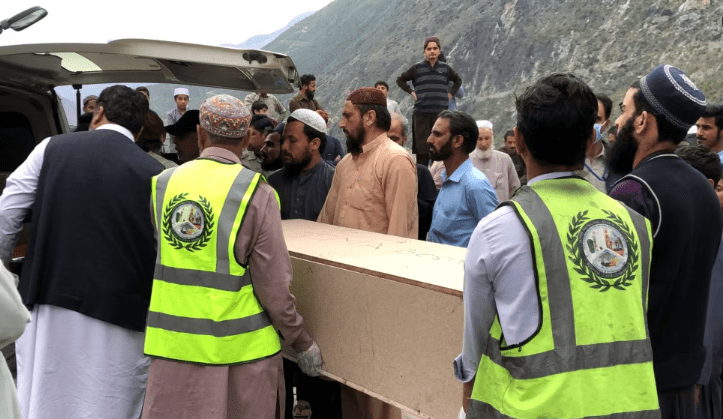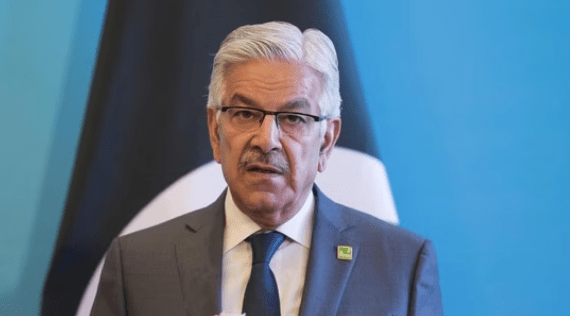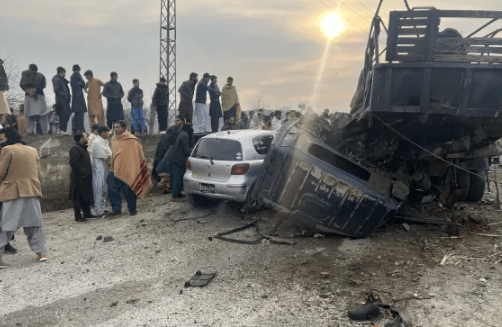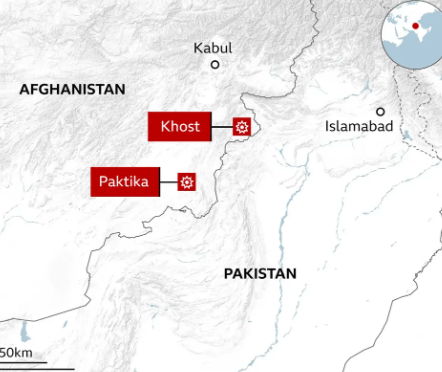Rising terrorist threat in Afghanistan and the surrounding area

According to a UN report, there is still a “strong and symbiotic” relationship between the Taliban, Al-Qaeda, and Tehrik-e-Taliban Pakistan. The ability of terrorist groups to freely operate under the Taliban’s de facto rule in Afghanistan is increasing the threat of terrorism in both the country and the region.
According to the fourteenth report of the Analytical Support and Sanctions Monitoring Team of the 1988 Taliban Sanctions Committee of the UN Security Council, the Taliban have actively supported Tehrik-e-Taliban Pakistan despite claims that they would not permit attacks on other nations to take place on Afghan soil.
The Taliban have pressed member nations for counterterrorism support in its conflict with the Islamic State of Iraq and the Levant – Khorasan Province (ISIL-K), which it views as its major opponent, while retaining contacts to various terrorist organizations.
The relationship between the Taliban, Al-Qaeda, and Tehrik-e-Taliban Pakistan (TTP) is still solid and mutually beneficial. Under the de facto rule of the Taliban, a variety of terrorist organizations enjoy more freedom of movement. They are effectively using this, and both in Afghanistan and the surrounding area, the danger of terrorism is growing, according to the research.
The Taliban, it continued, have not upheld the anti-terrorism clauses of the Agreement for Bringing Peace to Afghanistan between the United States of America and the Taliban, despite their efforts to lower the profile of these groups and their participation in operations against ISIL-K.
Al-Qaeda is improving its operational capacity.
Additionally, the report noted that there are signs that ISIL-K operations are becoming more sophisticated and deadly (if not more numerous), that TTP is attacking Pakistan with support from the Taliban, and that foreign terrorist fighter groups are projecting threat across Afghanistan’s borders.
The Taliban’s harboring and backing of TTP, the study said, refutes the group’s repeated claims that Afghan land won’t be utilized for strikes against other nations and shows that the danger they pose extends beyond Afghanistan’s borders.
The report stated that there is an ideological anomaly in the nature of the historical dynamic between TTP and ISIL-K, which is currently the main threat to the Taliban within Afghanistan’s borders. “The relationship between the Afghan Taliban and TTP, like the Taliban’s relationship with Al-Qaeda, is tightly bonded and unlikely to dissipate,” the report added.
According to the report, “continued Taliban support to TTP appears likely to test Pakistan’s capacity for restraint and runs the risk of a return to higher levels of violence on both sides of the border.”
The current Monitoring Team report, which is the first in which the Taliban have been in control during the whole reporting period, concludes that the Taliban leadership does not seem to be giving in to calls for compromise or change in the hopes of gaining political legitimacy on a global scale.
“Any significant political resistance has no effect on them. Many neighboring nations have seen an escalating security danger over the reporting period as a result of the Taliban’s harboring of foreign terrorist combatants, it added.
The execution of Al-Qaeda chief Aiman al-Zawahiri in a Kabul guesthouse associated to Taliban acting Interior Minister Sirajuddin Haqqani in July 2022, he said, did not relieve this worry.
“To many of the interlocutors consulted for this report, that single event speaks volumes as to the credibility of Taliban commitments to break with terrorist groups as stated in the Doha Agreement,” the report concluded.
Afghanistan’s location
According to the research, Al-Qaeda still has a tight and mutually beneficial connection with the Taliban and views Afghanistan under Taliban rule as a safe haven.
Al-Qaeda has been talking with the Taliban, backing the government, and defending key Taliban individuals as it continues to seek to enhance its position in Afghanistan. Al-Qaeda has a low profile and concentrates on exploiting the nation as an ideological and logistical base to organize and gather new members while clandestinely reestablishing its capacity for foreign operations, the report stated.
Al-Qaeda also aims to strengthen its ability to lead and advise its affiliates as well as smuggle individuals into the ranks of the Taliban, TTP, and ISIL-K. The organization receives funding for its operations through contributions and the core of Al-Qaeda, including via hawala services and cryptocurrencies.
ISIL-K was rated by member states as the most significant terrorist danger now posed to Afghanistan, its neighbors, and Central Asia. The organization has benefitted from improved operational capability and mobility within Afghanistan during the last year.
In order to incite sectarian strife and destabilize the area in the medium to long term, it intends to sustain the rapid tempo of assaults, most of which have limited effect.
More than 190 suicide bombings against soft and hard targets in major cities have been blamed on ISIL-K since 2022, resulting in almost 1,300 fatalities or injuries.
ISIL-K also made significant efforts to kill Mullah Yaqub and Sirajuddin Haqqani in 2022, it was stated, but they were unsuccessful. According to reports, the operations included successfully breaking into both targets’ residences, showing access and maybe making use of insider knowledge.
The strikes carried out by ISIL-K overall showed great operational capabilities in terms of reconnaissance, coordination, communication, planning, and execution. Attacks on prominent Taliban leaders also improved ISIL-K morale, stopped defections, and increased recruiting, particularly from inside the Taliban’s ranks.
According to the source, AQIS (Al-Qaeda in the Indian Subcontinent) has 180 to 200 militants, with Osama Mehmood serving as the organization’s emir, Atif Yahya Ghouri serving as his deputy, and Muhammad Maruf in charge of recruiting new members.
AQIS is present in the provinces of Kandahar, Nimruz, Farah, Helmand, and Herat and is actively assisting TTP in order to get through Taliban limitations.
According to estimates, there are between 4,000 and 6,000 ISIL-K fighters (including family members), including Afghans, citizens of Azerbaijan, Iran, Pakistan, Russia, Turkey, and Central Asian nations, as well as a small number of Arab fighters who recently traveled from the Syrian Arab Republic to Afghanistan.
ISIL-K strongholds and training facilities are mostly found in the northeast (Badakhshan and Takhar), east (Kunar, Nangarhar, Nuristan, Paktika, Paktiya, and Khost), and north (Baghlan, Balkh, Jowzjan, Kunduz, and Faryab Provinces). At least five new ones are expected to be constructed in 2022.
In the country’s center (Kabul, Kapisa, and Parwan), the organization has established a network of sleeper cells; elsewhere, ISIL-K operates in cells of 5 to 15 persons.
TTP is said to have between 4,000 and 6,000 militants in Afghanistan, most of whom are stationed in the eastern provinces of Nangarhar, Kunar, Logar, Paktika, Paktiya, and Khost. Mufti Noor Wali Mehsud, the organization’s head, and Qari Amjad Ali, his deputy, are located in the provinces of Paktika and Kunar, respectively.
TTP has sought to regain control of territory in Pakistan since coming together with multiple breakaway factions, it said, feeling encouraged by the Taliban takeover of Afghanistan.





